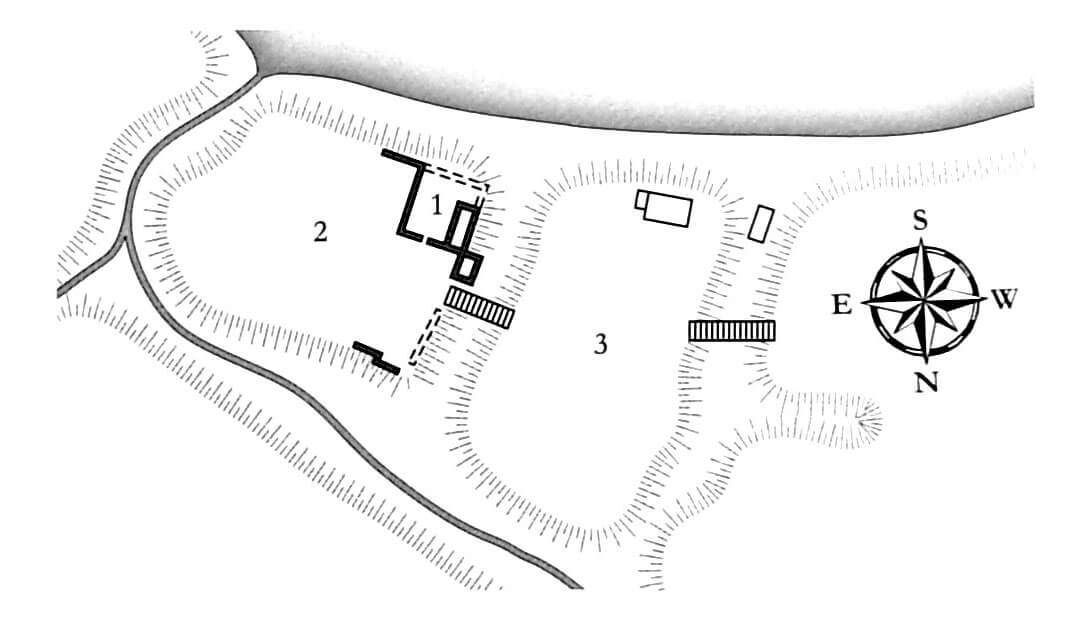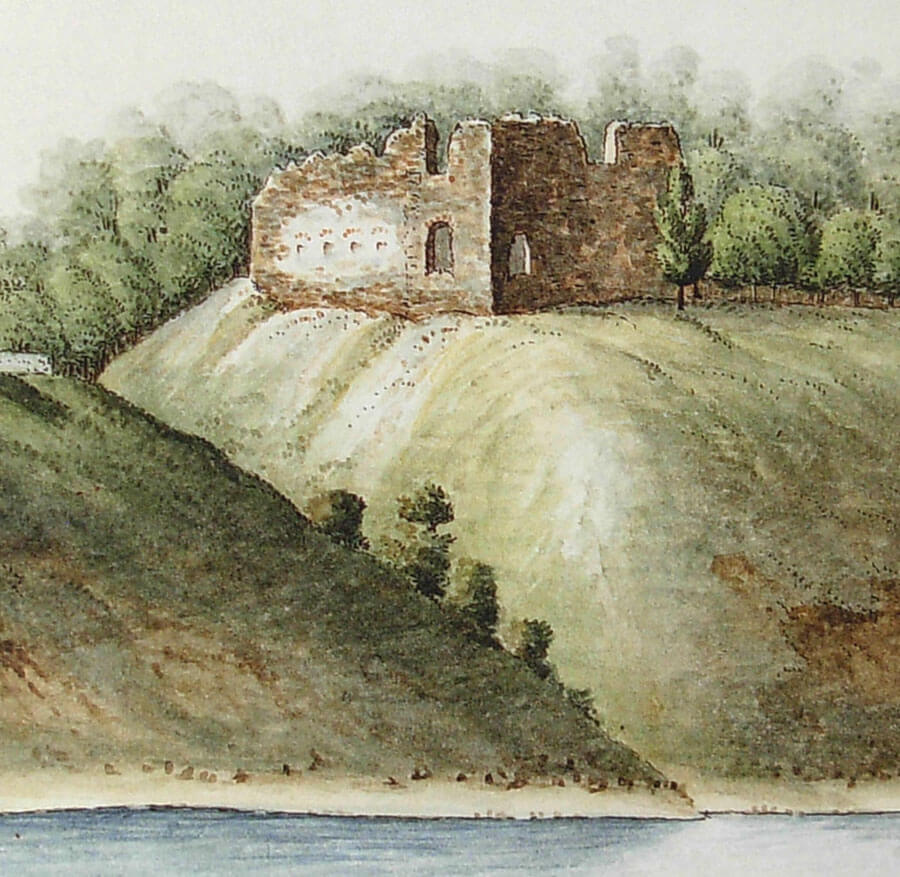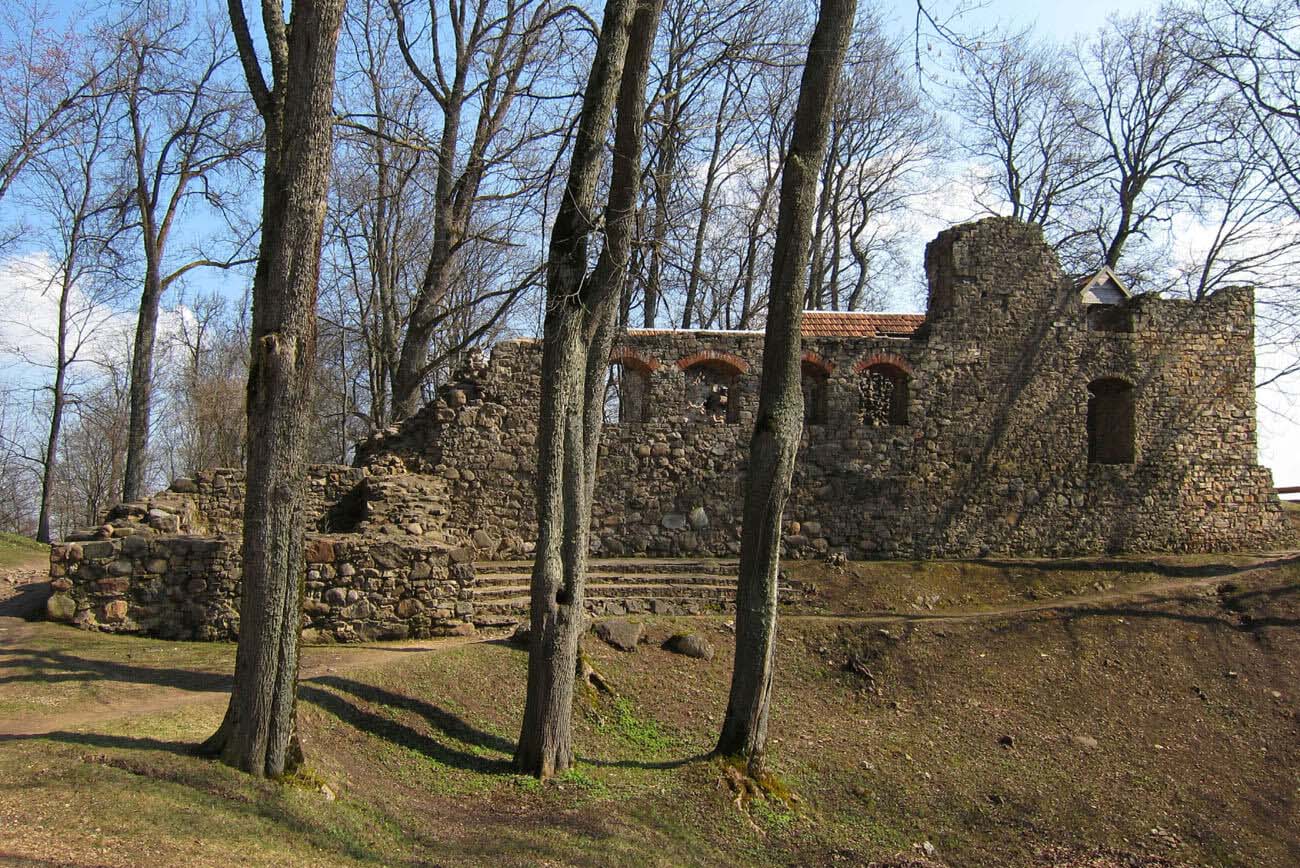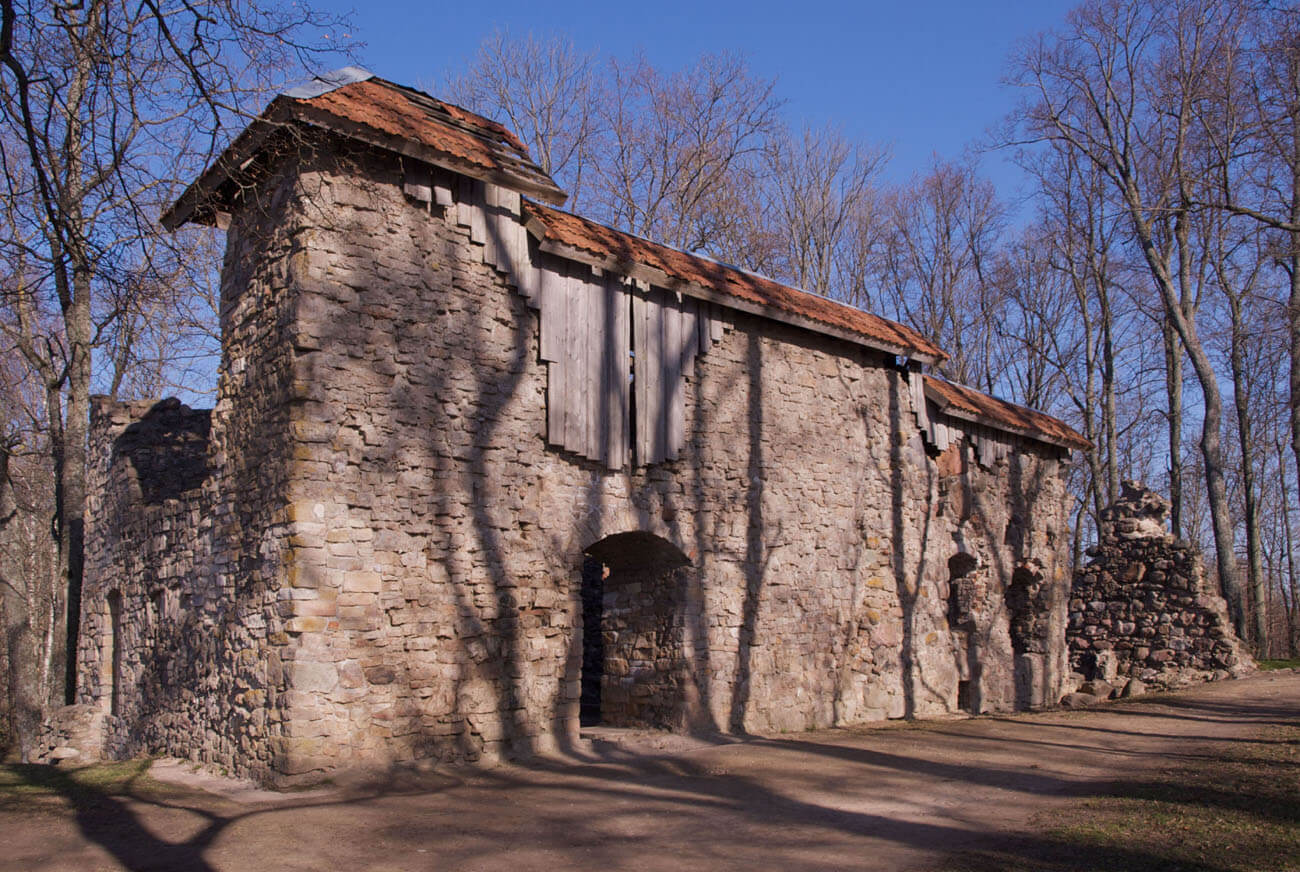History
The bishop’s castle of Lennewarden was first recorded in documents in 1201 and 1229, so it was one of the oldest stone fortresses in Livonia. It guarded the border with the Teutonic Knights and ensured the safety of navigation on the Dauguva River and trade with Ruthenia. The direct cause of its construction could also have been the devastating raids of pagan tribes on the surrounding lands.
It is known that in 1201 the bishop residing in Riga granted Lennewarden to one of his vassals, a knight named Daniel. However, the castle did not become the seat of a noble family, because before the mid-13th century it was reoccupied by the Riga cathedral chapter, and then the direct representatives of the archbishop took control of it. In the following centuries, the stronghold changed owners several more times, becoming the victim of disputes between the Teutonic Order and the archbishopric. In addition, the castle was burned down by Lithuanian troops at least once, in 1361. Lennewarden’s role as a stopping point for merchants traveling along the Dauguva was emphasized at the beginning of the 16th century, when the archbishop of Riga, Jasper Linde, founded nearby the only seat of the Hospital Brothers of St. Anthonyin in Livonia. The monks had their own monastery, church, and also ran a roadside hospital, where they provided assistance to needy travelers.
The end of the church’s authority over the castle came in 1558, when it was transferred to the Polish-Lithuanian Commonwealth in exchange for a promise of military assistance in the event of a war with Moscow. However, this did not save Lennewarden from being captured and burned by the troops of Ivan the Terrible in 1577. After the end of the war, the rebuilt castle was used as the seat of the starosty. The final destruction of the building was brought about by the 17th-century wars between the Polish-Lithuanian Commonwealth, Sweden, and Russia. The castle was first described as unfit for use as early as 1613, and it likely remained in ruin from then on.
Architecture
Lennewarden was situated on a high hill on the northern banks of the Daugava, surrounded by the main riverbed and the streams flowing into it. Originally, the castle was limited to a single residential house on a rectangular plan measuring 20 x 10 meters, with a small courtyard surrounded by a defensive wall adjoining it from the east. In the late 15th century or early 16th century, the castle was supposedly adapted to the use of firearms, which may have involved new gun loop holes in the curtains of the defensive wall and replacing the open wall-walks with covered defensive galleries.
In the north-east of the complex, a large bailey was separated, probably surrounded by a stone wall. Its length was about 170 meters, width about 85 meters. The gate to the castle core was from the north, while entry to the castle hill was possible from the west, via a bridge over the moat, protected by a quadrangular tower measuring 7.6 x 7.7 meters. The tower faced the second bailey or settlement, covering an area of approximately 130 x 70 meters. This part was not protected by a stone defensive wall, but was surrounded by a moat and steep slopes of the hill.
Current state
The remains of the main part of the castle have survived to the present day, reaching up to the height of the first floor of the ruined residential building. A small fragment of the wall of the outer bailey is also visible, along with the base of the quadrangular tower. Admission to the ruins is free.
bibliography:
Borowski T., Miasta, zamki i klasztory. Inflanty, Warszawa 2010.
Herrmann C., Burgen in Livland, Petersberg 2023.
Tuulse A., Die Burgen in Estland und Lettland, Dorpat 1942.





